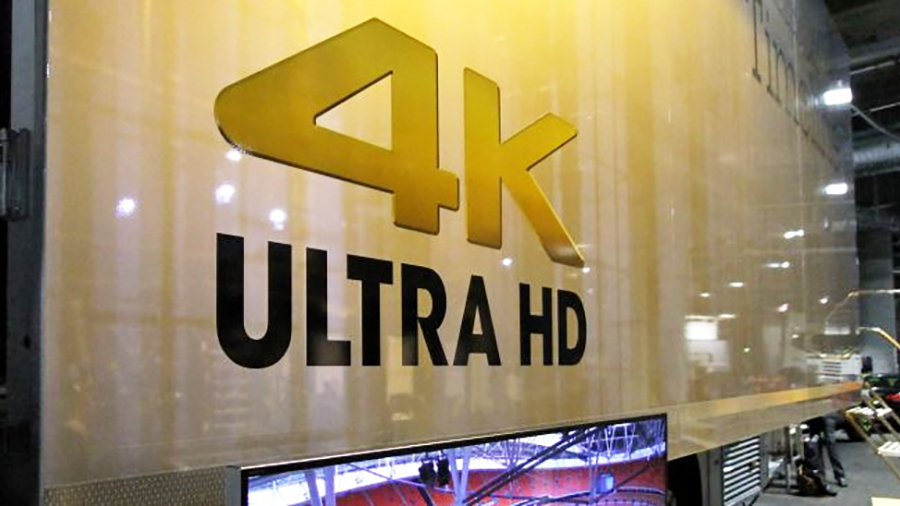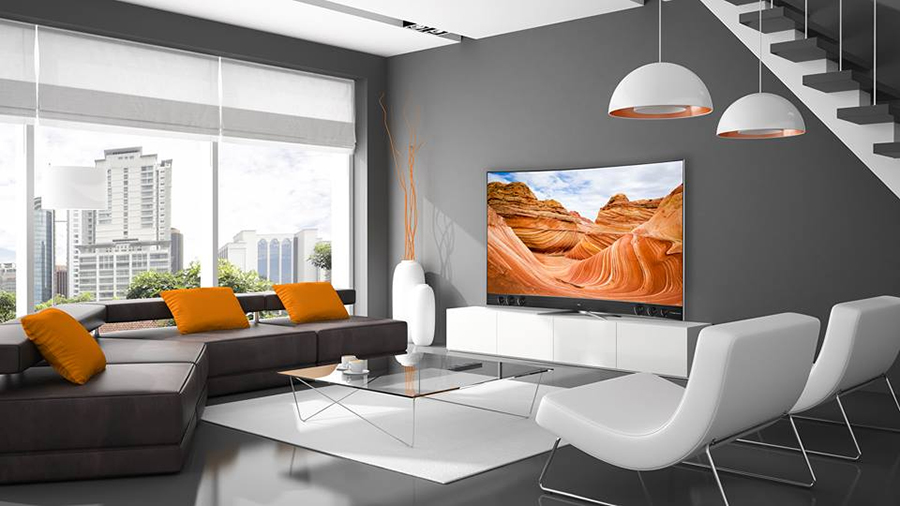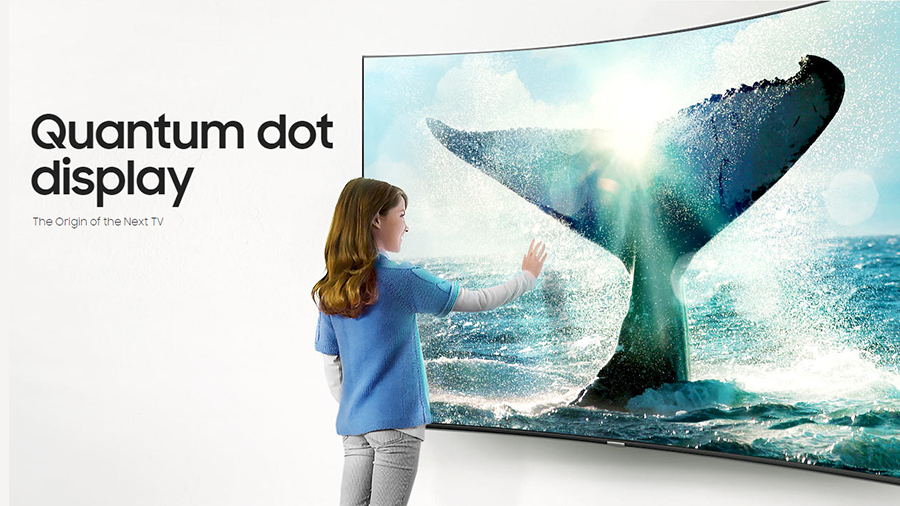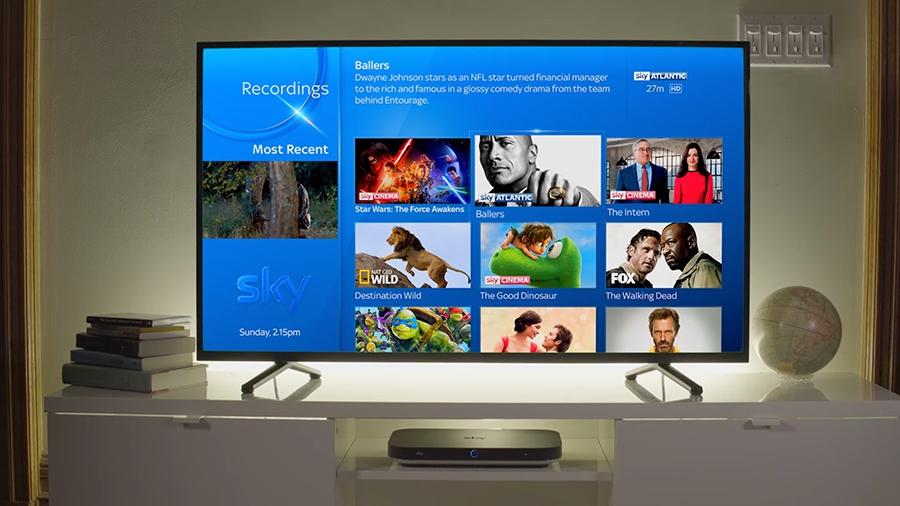

We might not all be huddling around a box in the corner of the living room at the same time every week these days, thanks to Netflix and iTunes, but TV in a general sense isn't going anywhere - and in fact there's lots more to come for the setup you've got at home.
TVs are now smarter than ever, and still getting smarter all the time, while new technology from the big manufacturers and content providers means those pictures have never looked so eye-poppingly good. Here's what else you can look forward to in the near future.
Unstoppable trend

All of the latest and greatest TVs from the likes of Panasonic, Samsung, LG and Sony now boast an Ultra HD (aka 4K) resolution. The drift from Full HD TVs to Ultra HD televisions is an unstoppable trend that will, eventually, come to every living room and home cinema.
Ultra HD puts eight million pixels on a screen - four times that of a Full HD TV's two million - which in camera parlance is 8 megapixels to a paltry 2 megapixels. Why wouldn't you upgrade and, eventually, go even further?
Until now, a good reason has been the lack of available content, but with Netflix and Amazon now offering 4K streaming, and BT, Sky and Virgin all ramping up the 4K sports and movies you can get on their platforms, that excuse is rapidly slipping.
Next resolution and colour

Wowed by Ultra HD? We don't blame you, but it's a mere stepping stone to an even bigger resolution. 8K is a long way from the mainstream, but we're already seeing the first bits of hardware appear, taking the resolution up to a staggering 32 megapixels.
The problem is that there comes a point when the human eye can't tell the difference between certain resolutions - not unless you have an 100-inch set in your home and are sat close enough to it. If resolutions are getting close to topping out, there are plenty of other areas where TV companies can innovate, including colour and brightness.
Get all the latest news, reviews, deals and buying guides on gorgeous tech, home and active products from the T3 experts
Netflix, Amazon and others now offer a selection of content produced in High Dynamic Range (HDR). HDR – something smartphone cameras have offered for years – is about expanding and exaggerating the range of colours on TVs, deepening black levels and improving contrast, and making objects on the screen more pronounced.
The effect is stunning – so much so that HDR is at least as important a selling point for new TVs as Ultra HD resolution, and could become even more crucial in the years ahead. There are also rival systems, like Dolby Vision, designed to eke out yet more visual brilliance from the pictures you see on the screen.
Quantum mechanics

You've heard it all before, but OLED TVs are, in our estimation, a gazillion times better than LED TVs. LG's OLED TVs use an entirely different tech to LED, using an organic semiconductor layer that lights up when electricity is passed through.
Inky black, rich in colour and with not a judder or blur to be seen, OLED's only problem is its high production costs, which are now fortunately starting to come down.
There are variations on the theme, including quantum dot LED (QLED) TVs - these are LED panels with a thin film of nanocrystals (quantum dots) in between the backlight and the display, increasing colour depth.
What could be more desirable than a TV that sounds like it has something to do with quantum physics? Much of Samsung's latest line-up of sets uses QLED technology, promising richer and deeper colours than ever before.
Shape-shifting

If there's one thing about TVs that won't change, it's their rectangular shape, right? Well, while you shouldn't expect sci-fi hologram, circular or olfactory (smell-o-vision) screens just yet, the multitude of curved products now on offer suggest that TVs are changing shape.
These sets certainly improve the sense of immersion - it's almost like being right there with Daniel Craig in a Bond movie - and you get a wider field of view as well. On the downside, reflections and viewing angles can be a problem, any many viewers just prefer something that's plain and flat.
One of the more interesting moves we've seen at recent tech trade shows is towards transparent sets - wafer-thin screens that seem to vanish completely when you're not watching them.
Attempts to get the super-wide TV to catch on - as seen in occasional Philips and Samsung sets - have so far fallen flat, but never say never. We may one day see the 21:9 aspect ratio become standard as a stepping stone to full 8K displays.
CES 2017

As usual, we were treated to a host of top TV sets at CES earlier this year, and these models point the way for the televisions of the future - even if you can't go out and buy all of them just yet.
LG's 4K flagship OLED W7 model is incredibly thin at just 2.57 millimetres thick, and combined with what LG says is the best-quality picture ever, it's certainly worth looking out for when it finally hits stores - just make sure you're saving up in the meantime.
Meanwhile Samsung has been busy working on the Q7, Q8 and Q9 sets, complete with quantum dot technology, ready for 2017. Brightness, detail and colour are better than ever before according to Samsung.
With the other major manufacturers all producing sets that are lighter and thinner than ever before - with pictures that are increasingly vibrant and sharp - it's a great time to be in the market for a new set.
How to watch Ultra HD

Up until now it has been something of a challenge to find 4K content to watch, and there's still precious little of it on terrestrial channels, or on Virgin (though its latest V6 box is at least 4K capable).
Sky Q is leading the way, with a good variety of 4K movies and sports shows on offer, and BT now screens some of its sports events in Ultra HD as well.
If you need a 4K fix then a number of Netflix shows - including House Of Cards, Breaking Bad, Orange Is The New Black and Marco Polo - are all available in Ultra HD quality, and there are now plenty of 4K movies on the platform too, though you do have to pay a little extra for the privilege of streaming them.
Amazon has followed suit with its Prime instant Video service, where Ultra HD streams are available at no extra cost on selected shows and movies, including original shows such as Transparent and Mozart In The Jungle.
4K content is starting to show up on YouTube too, or you can opt for Ultra HD Blu-ray discs - they're aren't too many around right now (and precious few players to view them on) but that's slowly starting to change as the higher-resolution format takes off.
- In the market for a new TV? We've got you covered
Jamie is a freelance journalist, copywriter and author with 20 years' experience. He's written journalism for over 50 publications and websites and, when he's not writing, spending most of his time travelling – putting the latest travel tech through its paces.
